#Art encompasses all human life
Text
it frankly pisses me off that what is essentially “rapists and abusers should be depicted as monstrous caricatures because humanizing them is inappropriate” is considered a very moral and enlightened position to have on art by so many people. a rapist can feel pain, have moments of vulnerability, be amiable and charming, express remorse and compassion at times, be a victim themselves, and so on in real life. they are even capable of doing good things. they can have different sides to them and have individuals in their lives that they are kind to or have a decent relationship with. they will be a human being, and that fact encompasses a lot. conflating that with the claim that they are entitled to and deserve forgiveness or absolution is an issue. nurturing a mindset that believes they need to be one note and uncomplicated to be a correct and tasteful depiction of a rapist inadvertently falls in line with the logic of “how could they have possibly raped you? they are so normal and kind to me. they did all these good things here and there.” ok that doesn’t change that they are a rapist.
#and its always said by fiction affects reality warriors ok this affects victims bc they will have doubts about their abuse and#about their own abuser because they are not the boogeyman#there was this pretty heartbreaking post by an abuse survivor who put this into words#its one of those things where it feels like the intention is good but it does more harm to victims than the perpetrators really#im not saying its impossible to have a tasteless depiction of a rapist but u guys just project that idea onto shit where it doesnt apply#if something explores the reality and consequences of their actions and the impact on the victims without downplaying it or ignoring it#then this critique just holds no water to me#idgaf if they r humanized ive seen their actions and just because they have a solitary other dimension doesnt mean i feel pressured#to forgive or absolve them lmao?#(as in the piece of art in question is not advocating for that)#cw rape
1K notes
·
View notes
Text

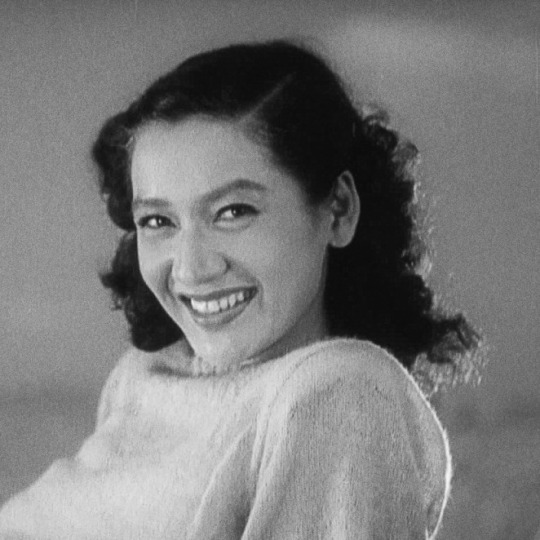
Propaganda
Yvonne De Carlo (Frontier Gal, The Ten Commandments, Casbah)— Although most famous for playing Lily Munster in The Munsters, Yvonne De Carlo had a successful movie career throughout the 1940s and 1950s, appearing in such films as “The Ten Commandments”, “Sea Devils” and two Munster movies later in life.
Setsuko Hara (Tokyo Story, Late Spring, The Idiot)— "'The only time I saw Susan Sontag cry,' a writer once told me, his voice hushed, 'was at a screening of a Setsuko film.' What Setsuko had wasn’t glamour—she was just too sensible for that—it was glow, one that ebbed away and left you concerned, involved. You got the sense that this glow, like that of dawn, couldn’t be bought. But her smiles were human and held minute-long acts, ones with important intermissions. When she looked away, she absented herself; you felt that she’d dimmed a fire and clapped a lid on something about to spill. Over the last decade, whenever anyone brought up her lips—'Setsuko’s eternal smile,' critics said, that day we learned that she’d died—I thought instead of the thing she made us feel when she let it fall." - Moeko Fujii
This is round 2 of the tournament. All other polls in this bracket can be found here. Please reblog with further support of your beloved hot sexy vintage woman.
[additional propaganda submitted under the cut]
Yvonne de Carlo:

The woman who brought Burt Lancaster to his knees.
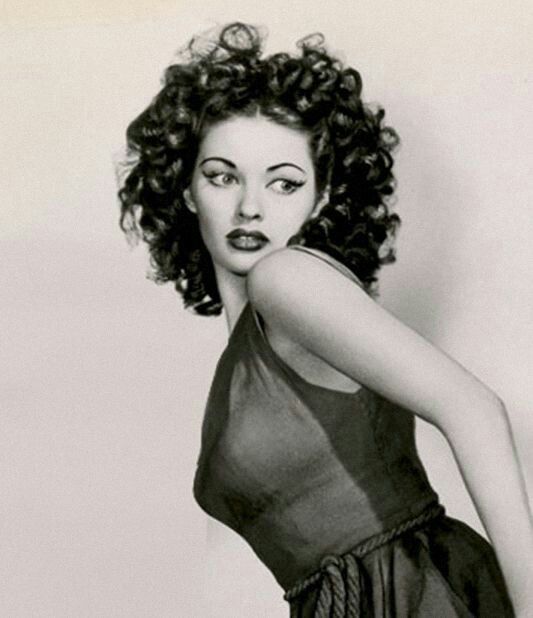
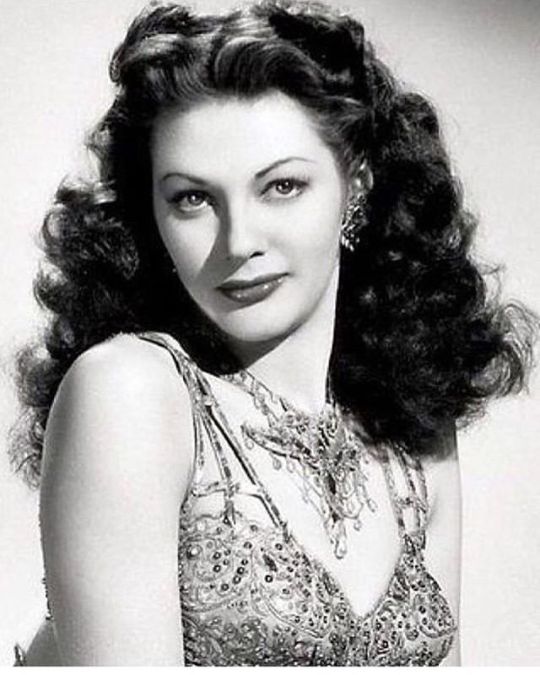
Setsuko Hara:

One of the best Japanese actresses of all time; a symbol of the golden era of Japanese cinema of the 1950s After seeing a Setsuko Hara film, the novelist Shūsaku Endō wrote: "We would sigh or let out a great breath from the depths of our hearts, for what we felt was precisely this: Can it be possible that there is such a woman in this world?"

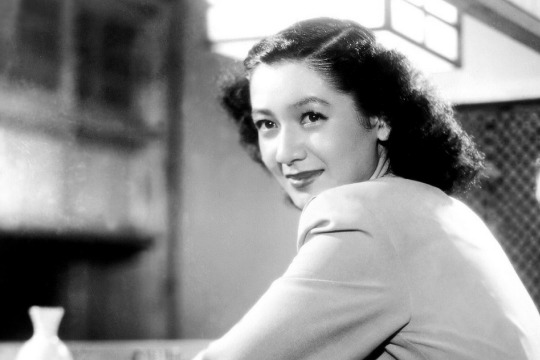
One of the greatest Japanese actresses of all time!! Best known for acting in many of Yasujiro Ozu's films of the 40s and 50s. Also she has a stunning smile and beautiful charm!
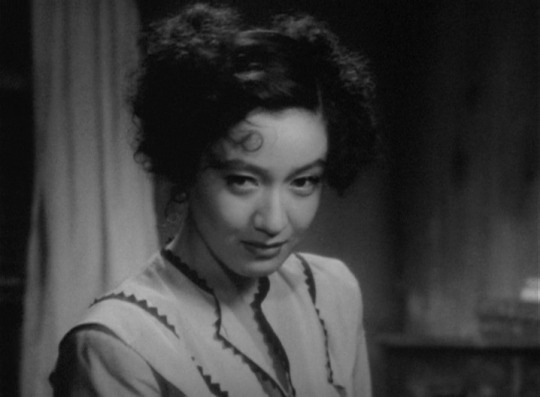


Linked gifset
Linked gifset 2
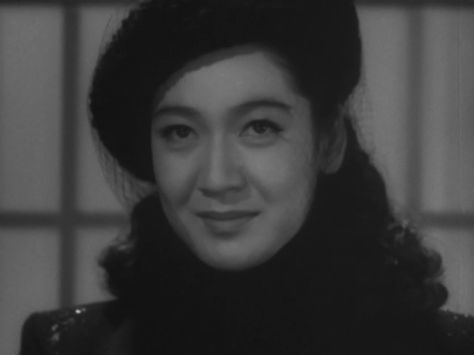
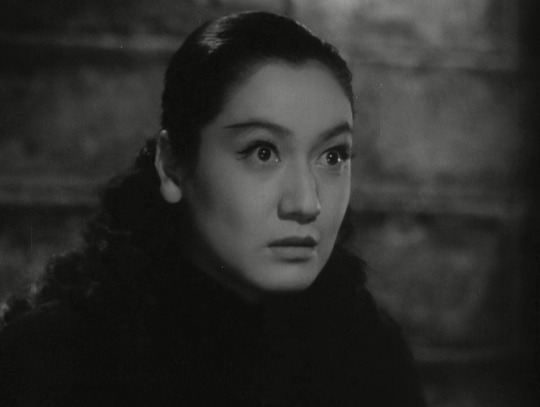

She's considered by some to be the greatest Japanese actress of all time! In Kurosawa's The Idiot she haunts the screen, and TOTALLY steals the show from Mifune every time she appears.

"No other actor has ever mastered the art of the smile to the same extent as Setsuko Hara (1920–2015), a celebrated star and highly regarded idol who was one of the outstanding actors of 40s and 50s Japanese cinema. Her radiant smile floods whole scenes and at times cautiously undermines the expectations made of her in coy, ironic fashion. Yet her smile's impressive range also encompasses its darker shades: Hara's delicate, dignified, melancholy smile with which she responds to disappointments, papers over the emotions churning under the surface, and flanks life's sobering realizations. Her smiles don't just function as a condensed version of her ever-precise, expressive, yet understated acting ability, they also allow the very essence of the films they appear in to shine through for a brief moment, often studies of the everyday, post-war dramas which revolve around the break-up of family structures or the failure of marriages. Her performances tread a fine line between social expectation and personal desire in post-war Japan, as Hara attempts to lay claim to the autonomy of the female characters she plays – frequently with a smile." [link]

Leading lady of classic Japanese cinema with a million dollar smile
Maybe the most iconic Japanese actress ever? She rose to fame making films with Yasujiro Ozu, becoming one of the most well-known and beloved actresses in Japan, working from the 30s through the 60s in over 100 hundred. She is still considered one of the greatest Japanese actresses ever, and in my opinion, just one of the greatest actresses of all time. And she was HOT! Satoshi Kon's film Millennium Actress was largely based on her life and her career.

373 notes
·
View notes
Text
The Timeless Lessons of SADE ADU: A Feminine Breakdown of Her Qualities 💋

THE SOLDIER OF LOVE
Welcome back to The Black Feminine Society, your go-to place for illuminating and celebrating the spectrum of black femininity. You loved our last deep dive into the unique feminine qualities of the iconic Aaliyah Haughton, and we heard you loud and clear when we asked, 'Who's next?' With a confidence that's unmistakable and a style that's undeniably timeless, Sade Adu was your top pick in our recent poll. So, without further ado, let's deep dive, breaking down the feminine characteristics and qualities of this IT GIRL who continues to inspire us all with her grace, strength, and unmatched talent. Enjoy the read, and as always, let's continue the conversation in the comments below 💋
Key Notes: (What Sade Has Taught Us)
The Power of Grace & Elegance
There’s Strength in Sensitivity
Balancing Strength & Softness
Authenticity is Key
Tapping into Empathy & Compassion
Resilience and Independence
Nurturing Creativity
Having A Classy Style is TIMELESS
✨Grace and Elegance:
Sade exudes grace and elegance in her appearance, demeanor, and music. She carries herself with poise and sophistication, which teaches us the importance of gracefulness in our interactions and how living in your feminine energy can elevate our presence in the world.
✨Strength in Sensitivity:

Sade's music often explores themes of love, vulnerability, and sensuality. She demonstrates that embracing one's sensitivity and vulnerability doesn't equate to weakness but rather showcases inner strength and emotional depth. Learning to embrace and express our emotions authentically is a powerful lesson in femininity.
✨Balancing Strength and Softness:
Sade embodies a balance of strength and softness, showcasing that femininity encompasses a spectrum of qualities. She teaches us the importance of embracing both our assertive and nurturing sides, finding harmony within ourselves.
✨Authenticity:
Every IT Girl moves to the beat of her own drum! Sade remains true to herself throughout her career, not conforming to trends or expectations. Her authenticity resonates with audiences worldwide, teaching us the importance of staying true to our values, beliefs, and passions, regardless of external pressures.
✨Empathy and Compassion:
Sade's lyrics often convey empathy and understanding towards the complexities of human relationships. Her ability to capture the nuances of love and longing teaches us the importance of empathy and compassion in our interactions with others.
✨Resilience and Independence:
Despite facing challenges and setbacks in her life and career, Sade has maintained resilience and independence. She serves as a reminder that femininity is not synonymous with passivity and that women can be strong, independent, and resilient while still embracing their feminine qualities.
✨Nurturing Creativity:
Sade's music is a testament to the power of creativity and artistic expression. She encourages us to nurture our creativity, whether it be through music, art, writing, or any other form of expression, as a means of connecting with our inner selves and the world around us.


✨Classy Style:
Sade is renowned for her timeless and sophisticated style, both on and off stage. Her fashion choices often feature tailored suits, elegant dresses, and minimalist yet chic ensembles. Through her fashion sense, she exudes a sense of class and refinement that transcends trends and remains relevant across generations. This is why The Black Feminine Society encourages our ladies to always keep it classy, and chic with a touch of authenticity it’s TIMELESS.

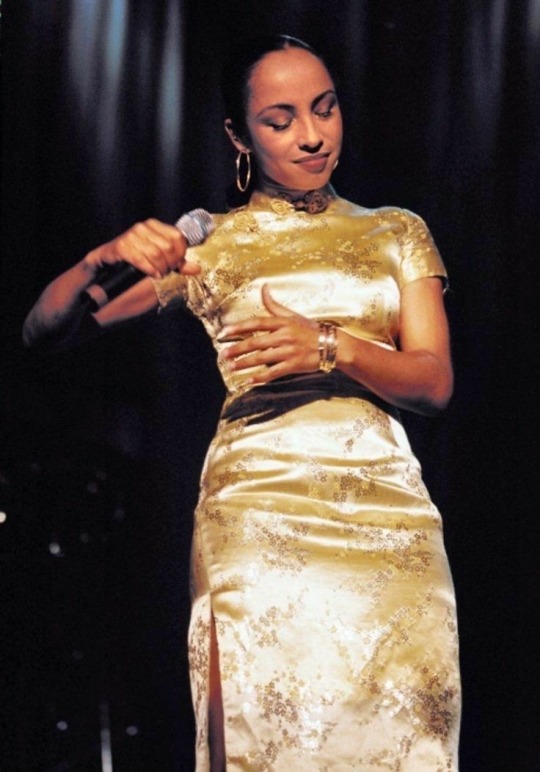
As we conclude our analysis of the feminine qualities of Sade Adu, we hope you've enjoyed this exploration as much as we enjoyed crafting it. The Black Feminine Society cherishes the opportunity to highlight such profound figures in our culture, figures like Sade who embody the essence of femininity with an unshakeable strength and grace. As we celebrate these IT GIRLS, we invite you to join us in our mission to redefine and embrace the multifaceted nature of black femininity. Thank you for joining us on this journey, and remember, your voice matters in these conversations. Until next time, keep embracing and expressing your unique feminine qualities.
︵‿︵‿୨♡୧‿︵‿︵
Did you know our platform is expanding✨
Follow us on: Instagram • NEW Facebook Group
#feminine journey#black women in femininity#classy black women#feminine energy#deep dives#black is beautiful#black women in luxury#goddess energy#feminine#sade adu#sade
64 notes
·
View notes
Text
"Nico, I wanna be a famous artist!" (A Case Study Using Manifestation and Astrology)
Lady Gaga went from no one knowing her name in a hand-made outfit at Lollapalooza in '07 to eclipsing and redefining pop culture in '09. And later headlined Lollapalooza in 2010. She told herself, "I'm going to make a Number One Record," and "The Fame is inside of Me," over and over again. This was what meteoric 'BTS-like' success looked like for millennials (which also happened in the same amount of time).
She manifested that shit like a motherfucker. She's living proof that a small indie artist who can barely move a crowd and who got INITIAL lukewarm reception after releasing her breakout album that only gained traction A YEAR LATER that YOU, IN FACT, CAN DO THIS SHIT. Gaga was performing in hole in the wall gay clubs in Europe and radios didn't care about that album until Just Dance blew up in the US. Every millennial remembers exactly where they were in life when that single became a hit song. This is also the woman who performed in an Ikea Parking Lot to promote said album.
This is a sign for all of the artists in the audience to NOT give up on your dreams. Even if things seem to be slow, delayed, or as if nothing is going on. There will always be SOMETHING behind the scenes if you commit to thinking in your favor. You're human and can have shitty days, weeks, etc, but it's important to NOT COMMIT TO BEING MISERABLE. Your engagement's gonna go up, you can find a new melody for that song, work through your writer's block and just WRITE the damn thing, and you're going to GET the right gig for you. Your dreams will be handed to you if you believe that they will. TRUST YOURSELF.
Astrologically, Gaga was in her 10H profection year when she first performed at Lollapalooza. But between 07-08+ she experienced the classic Jupiter and Saturn squares to her natal planet equivalents which occur in your early 20s that could've served as catalysts or hurdles she chose not to overcome and did the former. Contrary to what we hear about 10H profections being about finally being seen or getting promoted, etc, it's not inherently explosive. It depends on the chart and what the person does with their potential. Gaga used it as exposure and to further build her career that'd soon snowball into legendary success.
This isn't some Capitalistic tale about 'hard work paying off.' I don't believe in toil and 'hard work' in an exploitative economical sense. I believe in all-encompassing self-belief. Gaga could have easily thrown in the towel when the radios weren't gagged or the people weren't moving in the crowd. She, imo, was performing for audiences only SHE could see. Huge ones based on the scale she believed in.
Even if we could say her Mars-Neptune conjunction in Capricorn where she already had an exaltation or that her Moon-Mars or Moon-Pluto helped her, those harmonious aspects could have motivated her in the opposite direction if she wasn't seeing results. Because all of that Mars can easily wear out through exhaustion or entrap itself in the idea that it simply 'can't come easily.' Martian and Saturnian folks tend to enjoy suffering as a kink. She also could've easily been a flash-in-the-pan one hit wonder artist and faded or her era could've been very short. Maybe in hind sight it was from a musical perspective, but that 5 year run between The Fame and pre-Art Pop undeniably gave her quarter century defining success. And she'd later go on to win big accolades as a serious actress and is still going.
And speaking strictly astrologically, I see another big musical era for her coming. I saw it in Galliano's chart when his fire points got activated and will be emblazoned by Neptune in Aries transiting soon. I also see the same coming for our Mama Monster.
So, um, why are y'all giving up out there in the stands? COME GET ON STAGE AND CLAIM IT AS YOURS ALREADY.
54 notes
·
View notes
Text
RAD headcanons
Thanks to a tawdry publication I was able to read comments and opinions about why demons go to school and it left me thinking about it for days…. So here goes the headcanon resulting from that meditation about RAD.
Long text is coming!!
Headcanon on the structure, politics and history of the RAD!
The RAD is a recent new institution, established some time after the war.
Most of the nobles, the court and other powers of Devildom opposed or objected to this new institution.
Diavolo was also supported by many intellectuals and power figures (poets, sorcerers…)
So once the RAD was in place, Diavolo's identity as leader of the Devildom was consolidated (whatever the prince said went without saying).
Now, if Diavolo and Barbatos are among the most powerful demons... why aren't they teachers? Well, because in the society of the demons each type of demon had a function, they were super specialized.
In a manner of speaking, demons know a lot about their own and nothing about other things. For example the incubi and succubi were specialized in manipulation magic or curses that stole vital energy, while they did not know about potions or other types of curses (super specialization) .
Therefore, one of the goals of the RAD was to have experts in any subject to teach ALL demons about that subject. Barbatos may know a lot about potions but surely there would be a demon who would have dedicated their entire life to the art of potions and would be superior to the butler in that aspect.
This would explain why the "bosses" are Diavolo and the brothers, but they are not teachers but students.
Although Diavolo is a "student" everything must be reviewed and approved by the prince in order to move forward.
Considering that there would probably be a very wide range of the population in which age means nothing, we have teachers that are younger than some students.
This brings us to the next point, the RAD is an institution that seeks, in a way, social equality. By providing the opportunity for demons to have a general education, it frees them from having to follow a particular profession.
And this gives rise to a modernization of society with the emergence of new professions and companies such as Corvo or food and fashion franchises, models, magazines, amusement parks…
So a minor demon does not have to dedicate himself to what a minor demon used to dedicate himself to and can dedicate himself to something different, like cooking for example.
The RAD allowed Devildom to break out of the traditional structure that dominated the pre-Davolo reigns.
All with the intention of pursuing his dream, before achieving equality among the three kingdoms he will have to achieve equality among the people of his own kingdom.
With that said, we move on to the fact that RAD is one of the fundamental pillars for the aspirations of our demonic golden retrier: to break the taboos and myths of the Celestial Realm and the human world.
And there is no better way than education.
Diavolo's dream goes in steps, first we teach how the celestial realm works, then we try to establish bonds of cordiality, then that angels are not so threatening and then we bring in an Angel (humans are easier).
To achieve this, a school that is teaching the truth is essential.
Surely the RAD has also taken examples from the Celestial realm or from human educational institutions to create a unique institution that encompasses something of the three worlds, hence the various contacts with witches, wizards and other creatures.
Solomon helped to create the first curricula, zero evidence but no doubt.
As many of you commented, living a very long life means having to be constantly learning, imagine human society how fast it advances (evidence in season 3) in order to keep up with it is necessary to keep learning.
Also there were many reigns, a lot of history prior to what we know, to unravel all that and teach you that history it takes time, new inventions, new contributions or corrections of what is already known...
However, the RAD is divided into blocks, for basic studies, medium studies and advanced studies (which would be where our demons and ourselves are), according to what each student wants to learn.
Attendance at the RAD is not obligatory for demons, only those who aspire to certain jobs, such as historian, professor or politician have to have specific mandatory training.
In the RAD the youngest demons are those equivalent to 12 or 13 years old. Luke is a clear example (I'd like to write about his interactions with demons his age, Mephisto's brother perhaps?)
It took Mc months to understand the structure of the RAD because of its complexity and apparent meaninglessness.
Barbatos attends only the classes he likes.
Diavolo goes to all the classes because he wants to experience the most normal life possible, as some of you commented.
Lucifer attends almost more tutorials with teachers for problems caused by his siblings than he does classes.
Only Barbatos, Diavolo and Lucifer can leave class whenever they want, the other brothers need permission for special situations.
Solomon has pacts with a professor or two, and the tension in his classes are fun to watch.
Mc has been and continues to be lost in the RAD.
Diavolo will try to incorporate any funny events from the human world (thanks MC) even if they are preschoolers.
In short, to say that the RAD is an institution that goes hand in hand with the government and attacking it means attacking Diavolo's reign.
If you have come this far thank you very much, I know that a brick like this is hard to swallow, (re-reading it I have decided that soon I could write the constitution of Devildom XD)
Again thank you very much for reading and I would love to read your headcanon about the RAD, its students, teachers, etc. …. Best wishes.
.
.
#obey me#obey me! shall we date?#obey me shall we date#omswd#obey me otome#obey me one master to rule them all#obey me lore#obey me headcanons#obey me rad#obey me imagine#obey me devildom#diavolo obey me#obey me diavolo#diavolo om#obey me story#Obey me dev
415 notes
·
View notes
Note
hello, i've recently come across more accounts similar to yours and they have really helped me feel closer to God. so for starters i appreciate you and everything you have to say is very insightful. i am new to Christianity (looking into Catholicism) but i have struggled with my relationship with God for a few years as i am queer. Anyway, all of that is not entirely related to my question. as i wasn't raised religious, i have done some things that i am not proud of that i hope won't ruin God's love for me. for example, i have said stuff that could be considered "taking the Lord's name in vain" such as saying "oh my god", "jesus christ", etc. do you think that is actually taking his name in vain? truthfully, i have been trying to cut down regardless as i love God and mean no offense but it's hard as i have said words carelessly in the past. i apologize for the longer text!!
Welcome, beloved, I'm so glad you're here!
This is always such an interesting topic and I'm sure I won't do it justice, but I'll try to answer your question. The third commandment has been oversimplified for a lot of Christians, and I do think we should take it seriously—but when we caught up with people saying "omg" casually, we miss a lot.
"Taking the Lord's name in vain" can encompass quite a bit: cursing God, swearing on God falsely (in the sense of making promises you don't keep), treating sacred things with disrespect, using God for your own gain, using God to justify evil actions, claiming God's name for harmful theologies—really anything that profanes/using hollowly/for profit the name/essence/qualities of God. "Name" is more than language—it's a presence. So is the third commandment addressing casualness with religious language? I don't think that's what it's specifically interested in, and because the Ten Commandments functioned communally/legally more than personally I'm inclined to say it's concerned more with the promise type of swearing and temple rituals, but I do think the philosophies behind these large things can be brought down to the personal language level, especially for those of us who aren't ancient Israelites.
An old anecdote from my church is that for years they had a plain wooden cross in the sanctuary, but my childhood pastor had a crucifix put up. (This was before I was born, and I'm so thankful I got to grow up with a full, embodied cross rather than an empty one.) An old lady stopped in her tracks that morning, staring up above the altar, and said "Oh my god." The pastor said, "That's right, he is." Besides being used to poke fun at this lady (who had probably never encountered traditional art of the crucifixion in her rural Protestant life) and as a justification for having a crucifix (to more fully confront God), it was also used by my mother to explain why we weren't allowed to say "oh my god" unless the situation necessitated it.
This has made me rethink some of the things I say—and I think there are lines here that we all have to draw. Many exclamations/curses are religious in nature (like damn or hell), and should we only say those when we mean the full essence of the thing? My mother thinks so, and I've gone back and forth. I think what we say matters, and carelessness should never be our framework. I also know that I don't get offended when people say things like "oh my god"—and I've definitely said it before, in way less necessary situations than confronting him bleeding.
When we look at all the things the third commandment can encompass, exclamatory swearing is surely at the bottom of the list in terms of what matters interpersonally and religiously. The megachurch pastor who uses God to sell things and the abuser who uses religion as an excuse are much more relevant to me. This is about your attitude toward your faith, how you want your language to reflect that, and how seriously you take words that are really only translations of a human approximation of a theological truth.
A line I draw is "Jesus" vs. "God"—one is the personal name of my god, and one is more of a title. I don't swear using Jesus's name, but I've dropped an "oh my god." I'm also more likely to use religious exclamations in the face of things I genuinely care about—I'll say "oh my god" to something beautiful but am more likely to say "shit" when I drop something. Is this all arbitrary? Of course! But the language we treasure and the language we're less careful with always is.
I won't tell you where to draw your lines, but I will say the best way to approach any of it is to notice these things—which you definitely are! Whether or not we end up changing something, it's always good to be aware of what we say and how it could affect us. So ask those questions, think through it all. Don't let casualness make you forget the enormity of what we're talking about when we say "God," but also, turn to God with every emotion and in every situation. Don't bring religion into everything because you're being careless—do it because it's where you and the universe touch.
To answer another (and in my opinion more important) question you've asked, no, God's love for you isn't ruined. I don't care what you've said, what you haven't cared about, what you've done—God's love is incapable of being ruined. This would imply weakness or unfaithfulness, which our faith does not characterize God with. And Christianity is firm that it is never too late to repent—meaning, to turn around and dedicate yourself to not going back. (God's love reaches the unrepentant as well, of course—it is a matter of whether we can see it and move through it, not whether it's there.) Repent, for the kingdom of heaven is at hand—as in, it's always been here, it's happening now within you and your communities, and it will arrive.
Whatever changes you make and journeys you begin, God's love goes with you—it's not something we work toward having, but something we work toward honoring. It is hard to change habits—it's hard to change anything, and your dedication to thinking about this new part of your life is admirable.
I want to say don't get caught up in the smallest possible meanings of the commandments as you continue into Christianity, but I love that you are and that's not really the advice I want to give. What I mean is more, don't let this be a barrier. Every tiny thing is part of our lives, which means they can trip us up, be things to obsess over, be things we focus on to avoid other things, be areas we become perfectionist when that energy could be used more usefully. I am contributing to harm in countless ways that don't include swearing, and to be an imperfect human in this world, you are too. I give you permission to not let this be the hill you die on. Christianity calls us to be willing to die on so many hills, y'know? The enormity of our dedication can be overwhelming, but we move forward knowing the love of God is on our side.
The sacred Name has only ever been put into human words in the form of Jesus, and meeting him in both the sacred and ordinary is how I honor the Word. As I navigate the countless ways I exist and affect and am in relationship with the world, I come back to that. That true holiness can never be profaned, so I must not act as if it can be. When I find myself acting as if God could be hollow, I know I must turn back. I may embody this idea differently than you and others—we cannot all pay attention to everything at once. But I honor your commitment to the small things, and I pray that you live confident in the knowledge that nothing you have done or will do can stop God from entering into communion with you.
<3 Johanna
39 notes
·
View notes
Text
There's something so beautiful to me about thousands of people in 2023 appreciating the art of someone who was alive thousands of years ago, who lived a life we can never fully grasp or understand, but whose work and expression of self still resonated with us all, today. Something something the human experience is vast and all encompassing and no matter the time period, we can all appreciate a good little drawing of a bear.




341 notes
·
View notes
Text

Shiva’s Third Eye
art by EyeOfOrdum
The Unveiled Insight: The Significance of Lord Shiva’s Third Eye
In the intricate tapestry of Hindu mythology, Lord Shiva commands reverence as a deity of profound spirituality and cosmic balance. Among the many captivating aspects of his character, the third eye of Lord Shiva stands out as an enigmatic symbol. Often referred to as the “eye of wisdom,” Shiva’s third eye holds a deep-seated significance that transcends physical form, representing insight, enlightenment, and transformation. In this blog, we will delve into the captivating story and the spiritual significance of Shiva’s third eye.
The Mythical Origin of the Third Eye
The origin of Shiva’s third eye is a compelling narrative that resonates through the annals of Hindu mythology. According to the ancient texts, the gods once found themselves threatened by the relentless tyranny of a demon named Tarkasura. In a desperate plea for assistance, the gods turned to Lord Shiva, the cosmic dancer and the destroyer of evil.
As the cosmic battle between Shiva and Tarkasura unfolded, the demon resorted to cunning tactics, transforming himself into a formidable buffalo. Undeterred by the disguise, Shiva recognized the deception and unleashed his third eye’s fiery gaze. The intensity of this gaze was so immense that it consumed Tarkasura instantly, thwarting the malevolent force.
Symbolism Encompassed by Shiva’s Third Eye
Beyond its mythological tale, Shiva’s third eye is laden with layers of symbolism that hold profound spiritual and cosmic meanings:
Transcendence and Insight: Shiva’s third eye is a manifestation of his all-encompassing insight and transcendent wisdom. It symbolizes the ability to perceive beyond the immediate and comprehend the deeper truths that govern existence.
Destruction and Renewal: As the deity who dances the cosmic dance of creation and destruction, Shiva’s third eye represents the power of transformation. Its fiery gaze signifies the destruction of ignorance and attachment, paving the way for spiritual rebirth and renewal.
Mystical Awareness: Often associated with the “ajna” chakra, the sixth energy center in the human body, Shiva’s third eye represents spiritual awareness and heightened consciousness. This inner eye enables individuals to perceive reality beyond the material realm.
Balance and Equilibrium: The third eye embodies Shiva’s role as the ultimate balancer of cosmic forces. It reminds us of the importance of maintaining equilibrium between the material and spiritual dimensions of life.
Control over Desires: In certain interpretations, the tale of Shiva’s third eye symbolizes the mastery over desires. Shiva’s ability to maintain emotional balance and control his desires in the face of deception underscores the significance of self-discipline.
Fearlessness and Protection: The third eye’s fiery gaze also serves as a shield of protection for devotees, symbolizing the courage to confront challenges and overcome obstacles on the spiritual path.
Contemporary Relevance of Shiva’s Third Eye:-
Inner Wisdom: In an era inundated with distractions, Shiva’s third eye reminds us to cultivate inner wisdom and intuition. It urges us to see beyond the surface and recognize the deeper truths that guide our journey.
Transformational Power: Just as Shiva’s third eye signifies the transformative power of destruction and renewal, it encourages us to embrace change and view challenges as opportunities for growth.
Spiritual Evolution: The third eye symbolizes a journey of spiritual evolution, urging us to awaken our inner eye and tap into our highest potential. It guides us toward self-discovery, self-awareness, and higher states of consciousness.
Balancing Duality: Shiva’s third eye embodies the harmony between opposing forces. In our lives, it serves as a reminder to strike a balance between material pursuits and spiritual aspirations.
37 notes
·
View notes
Text
hi :) an update and reintroduction to myself, since its been a long time and things are different now
a lot of very big life-changing things have happened to me since i've been away, some very bad, some very good, all very hard stuff to go through. i moved to another country(!), got married to my partner and best friend of 7 years (!!), and im currently in the process of filing for immigration(!!!). ive also been grappling with mental and physical health issues that, for now at least, need to be managed without professional help which makes the challenging things even harder. but im here, im alive. imperfect, with a lot i need to work on, but im still trying and my life is several lightyears away from what it used to be. ive finally landed where im gonna stay, and now i can finally recover with the stable ground ive been without for my entire life.
ive been wanting to find a way to come back to social media after abstaining for over a year now aside from checking in now and then, and i had this sort of self-imposed pressure to make it something Significant with beautiful artwork to announce my return and signify how hard ive been working on recovering mentally emotionally physically and artistically. so i kept delaying it because nothing ive been making seemed amazing or groundbreaking enough to warrant all the fuss, and in the process depriving myself of basic human interaction because i didnt feel good enough about myself to show up empty-handed. however i now realise that that impulse was the same sort of mentality that got me so catastrophically burnt out so many times before, that my creativity and artistic output is a commodity that needs to meet a certain level of quality to justify it's existence to others, and all i could do was pray that people like it enough to keep paying attention to me. im trying to break out of that, and as such i have nothing to give you other than myself. im not a content creator, i am simply a person who creates.
ive done a lot of reflection on what is important to me this past year, and currently im in a state of flux and change and adjustment in all aspects of my life. ive basically restarted my entire artistic journey and im starting over from scratch in order to make my art something I both love to look at and love making, and neither of those things have been true for many years now. the same goes for how I presented myself and interacted with others during my time on social media, and I understand now what it means when people say "you teach people how to treat you"; it took me a long time to realise that I was unhappy with how people treated me, and that was a direct result of me constantly enabling specific behavior simply because it gave me positive attention (even if it was at my expense most of the time, people-pleasing habits die hard). from now on going forward, i want to give myself the respect i deserve, and be better about establishing healthy boundaries without being the isolated recluse ive become in the past year.
so all that said, hi! you can call me abel or blue :) i work as a remote graphic designer/illustrator for a tea shop in seattle, and live in canada with my husband will and our cat mango cheesecake! im a weird gay stoner with AuDHD and my current obsession and all-encompassing special interest is my multimedia art therapy project called ELFWOOD, and im always working on it in some capacity at any given time. im also a nsfw artist that loves drawing queer porn and doing drugs so suggestive stuff and things relating to weed and psychedelics will be a big thing here. i hope to be brave enough to post art and project updates someday soon, but i want to make sure its something i want for myself and not because i want to rely on external validation. thank u for reading and sticking around if u choose to! if not, thats okay and i hope u have a lovely day anyway :)
28 notes
·
View notes
Text

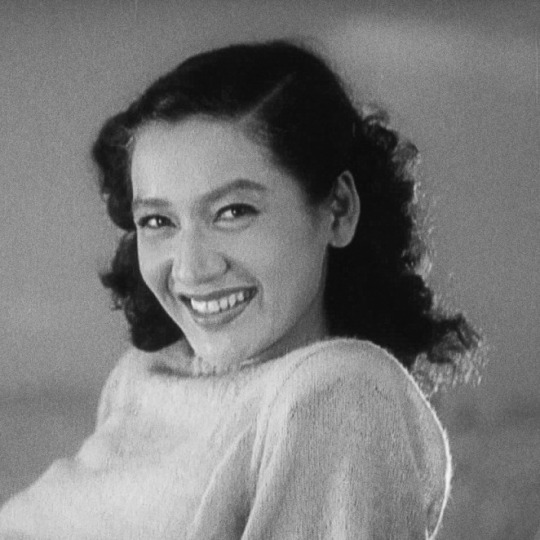
Propaganda
Barbara Stanwyck (Ball of Fire, The Lady Eve, Double Indemnity)—I hope someone else has submitted better propaganda than I because I don't want my girl's prospects to rest on me just yelling PLEASE VOTE FOR MY TERRIBLE HOT GIRLFRIEND. She is a delight in everything! She is often a sexy jerk! (It's most of the plot of Baby Face!) Even when she plays a "good girl" (as an example, Christmas in Connecticut, which more people should see) she's still kind of a jerk and I love her for it! She won't take men's shit and she sure wouldn't take mine!
Setsuko Hara (Tokyo Story, Late Spring, The Idiot)— "'The only time I saw Susan Sontag cry,' a writer once told me, his voice hushed, 'was at a screening of a Setsuko film.' What Setsuko had wasn’t glamour—she was just too sensible for that—it was glow, one that ebbed away and left you concerned, involved. You got the sense that this glow, like that of dawn, couldn’t be bought. But her smiles were human and held minute-long acts, ones with important intermissions. When she looked away, she absented herself; you felt that she’d dimmed a fire and clapped a lid on something about to spill. Over the last decade, whenever anyone brought up her lips—'Setsuko’s eternal smile,' critics said, that day we learned that she’d died—I thought instead of the thing she made us feel when she let it fall." - Moeko Fujii
This is round 4 of the tournament. All other polls in this bracket can be found here. Please reblog with further support of your beloved hot sexy vintage woman.
[additional propaganda submitted under the cut.]
Setsuko Hara:

One of the best Japanese actresses of all time; a symbol of the golden era of Japanese cinema of the 1950s After seeing a Setsuko Hara film, the novelist Shūsaku Endō wrote: "We would sigh or let out a great breath from the depths of our hearts, for what we felt was precisely this: Can it be possible that there is such a woman in this world?"

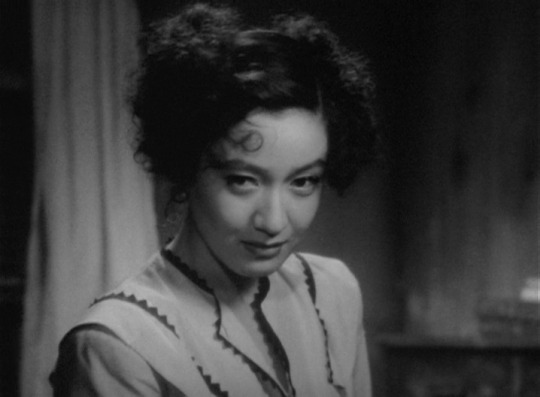
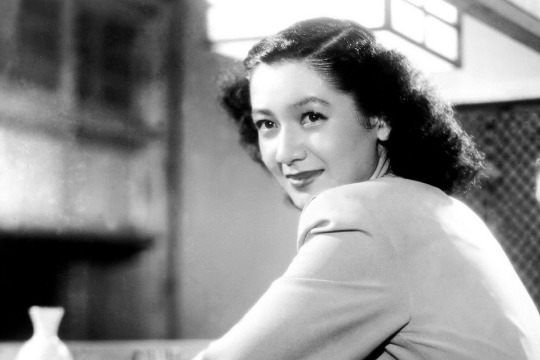
One of the greatest Japanese actresses of all time!! Best known for acting in many of Yasujiro Ozu's films of the 40s and 50s. Also she has a stunning smile and beautiful charm!

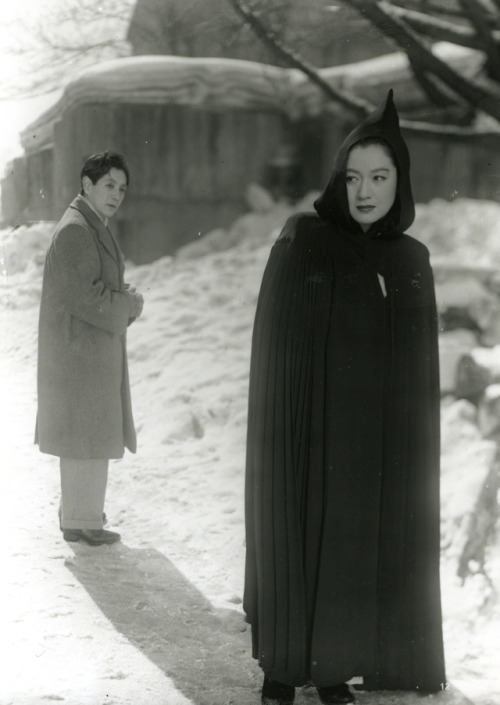
Linked gifset
Linked gifset 2
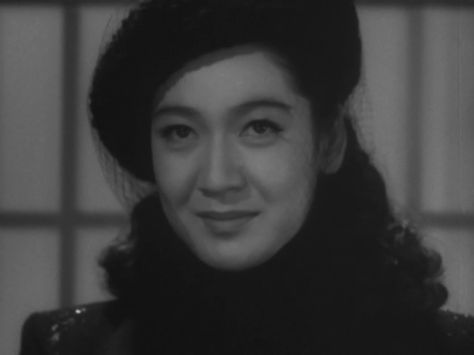

She's considered by some to be the greatest Japanese actress of all time! In Kurosawa's The Idiot she haunts the screen, and TOTALLY steals the show from Mifune every time she appears.
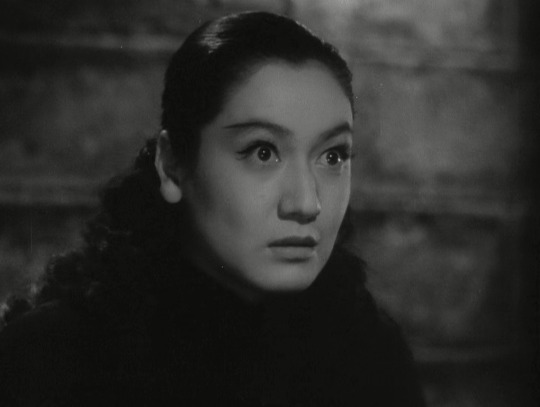
She's considered by some to be the greatest Japanese actress of all time! In Kurosawa's The Idiot she haunts the screen, and TOTALLY steals the show from Mifune every time she appears.
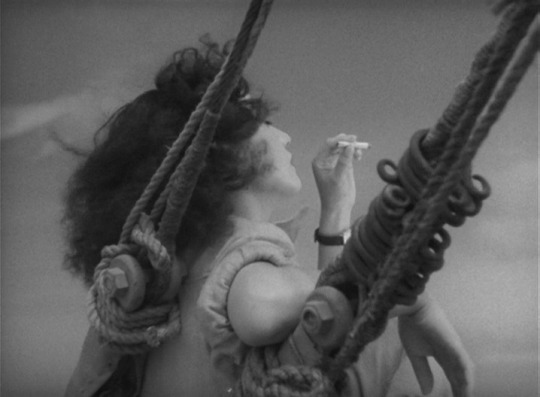
"No other actor has ever mastered the art of the smile to the same extent as Setsuko Hara (1920–2015), a celebrated star and highly regarded idol who was one of the outstanding actors of 40s and 50s Japanese cinema. Her radiant smile floods whole scenes and at times cautiously undermines the expectations made of her in coy, ironic fashion. Yet her smile's impressive range also encompasses its darker shades: Hara's delicate, dignified, melancholy smile with which she responds to disappointments, papers over the emotions churning under the surface, and flanks life's sobering realizations. Her smiles don't just function as a condensed version of her ever-precise, expressive, yet understated acting ability, they also allow the very essence of the films they appear in to shine through for a brief moment, often studies of the everyday, post-war dramas which revolve around the break-up of family structures or the failure of marriages. Her performances tread a fine line between social expectation and personal desire in post-war Japan, as Hara attempts to lay claim to the autonomy of the female characters she plays – frequently with a smile." [link]

Leading lady of classic Japanese cinema with a million dollar smile
Maybe the most iconic Japanese actress ever? She rose to fame making films with Yasujiro Ozu, becoming one of the most well-known and beloved actresses in Japan, working from the 30s through the 60s in over 100 hundred. She is still considered one of the greatest Japanese actresses ever, and in my opinion, just one of the greatest actresses of all time. And she was HOT! Satoshi Kon's film Millennium Actress was largely based on her life and her career.
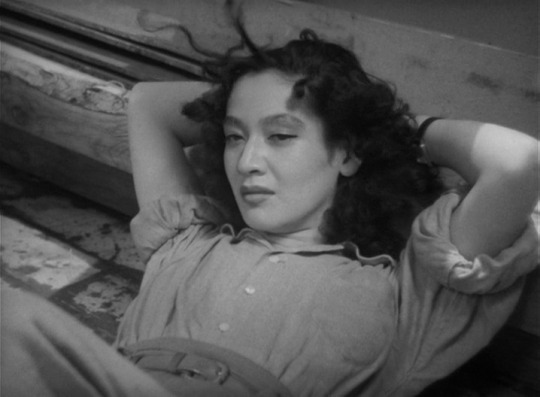
Barbara Stanwyck:
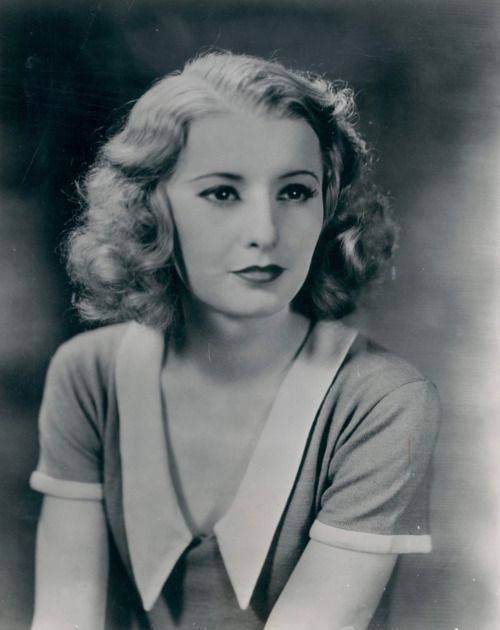
"THE leading lady of the golden age of hollywood. One of the only actresses to work independent of a studio, making short-term contracts that enabled her to make movies wherever she wanted. She had so much range, and could act in basically any genre. She's been rumored to be a lesbian literally since she was active in Hollywood; most notable is the rumor that she had a long time on-and-off relationship with famously bi Joan Crawford, her "best friend" for decades (They lived right next door to one another). She also lived with Helen Ferguson, her "live-in publicist" for many years. She was the quintessential femme fatale in Double Indemnity, and really pushed sexual boundaries in her pre-code films like Baby Face, and the famous screwball The Lady Eve, where she plays basically a downlow domme. Allegedly, when a journalist asked her if she was a lesbian, she straight up threw him out of her house. She even played a lesbian in Walk on the Wild Side"

"THE queen of screwball comedies. I adore her, I'd kill for her, I will cry if she's not gonna win this poll."

"listen ok she had awful politics she was a mccarthyist right wing wacko BUT she's so incredibly hot that i've deluded myself into believing i could fix her. if you see her onscreen she carries herself in a way that's just so effortlessly sexy AND she has just a stunning face. imo she was at her hottest in the 1940s but even as early as the late 1920s she had a rly captivating screen presence and just a beautiful face, and then post-1950 she was just irresistibly milfy so really she was just always incredibly hot. she was also an incredibly talented actress who was equally stellar in melodrama, film noir, and unhinged screwball comedy. the blonde wig they made her wear in double indemnity is notoriously silly looking but she still looks sexy in it so that's gotta count for something. i've watched so many terrible movies just for a chance at seeing her that i think her estate should be paying me damages."
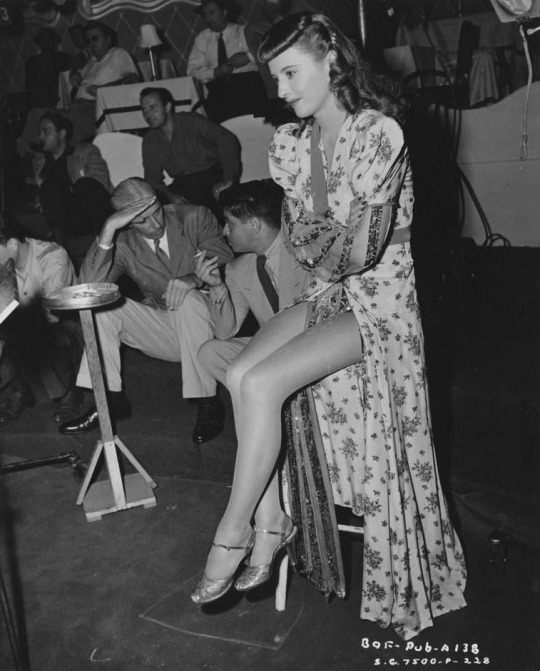

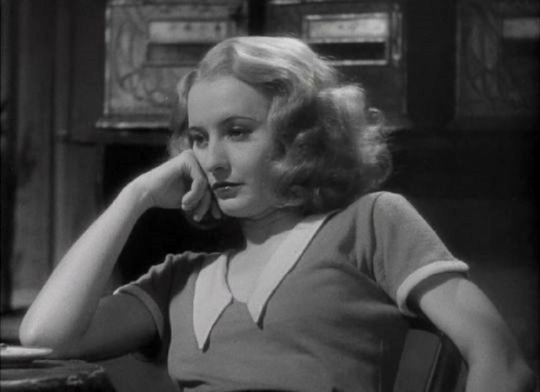
"Not often thought of for her sultriness, Barbara Stanwyck was incredible in that she could actually choose to be hot if the role called for it, and then have a glow-down to look ordinary for another role. She wasn't the most beautiful or effervescent, but damn did she have rizz. Watch her with Gary Cooper in Ball of Fire teaching him about "yum-yum" or with Henry Fonda in The Lady Eve whispering huskily into his ear."
youtube
"She is always the smartest woman in the room. Watching her play Henry Fonda like a befuddled fiddle in The Lady Eve was a highlight of my life. Femme fatale in Double Indemnity, comedy queen in Ball of Fire. She can do anything."
"She was part of my gay awakening"
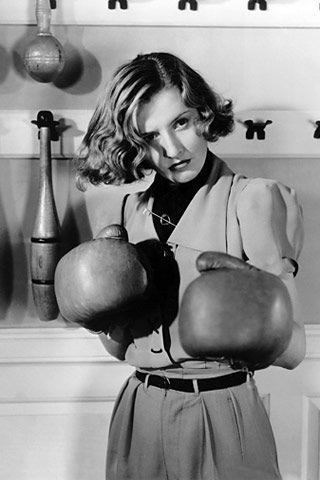
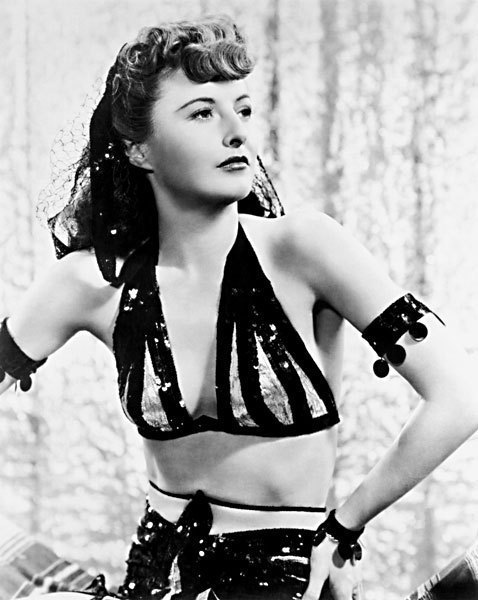
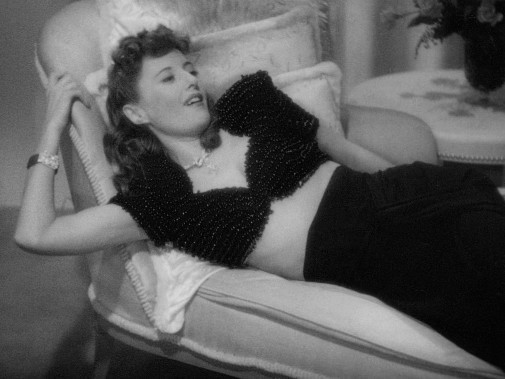
"SHE'S A PRE-CODE QUEEN. She did everything, drama, comedy. The most beautiful woman in the world to watch weep. Beg for to step on you with those legs. Fun Babs story: Ginger Rogers was offered the role in Ball of Fire but said, “Oh, I would never play that part, she’s too common.” So they called Barbara Stanwyck and they said “We offered this to Ginger Rogers but she’s turned it down, would you be interested?” And she read the script and she said; “You bet! I LOVE playing common broads. [link]"
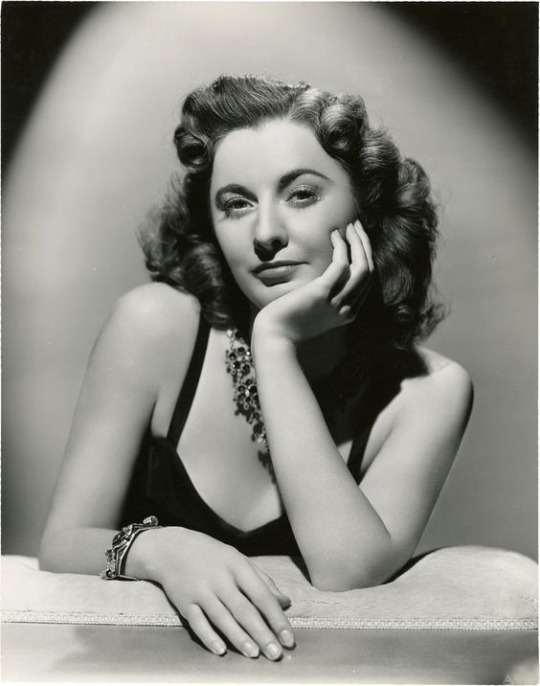
303 notes
·
View notes
Text
[Yōkai AU] Info & Tease
Made by Cat, aka Researcher Serif/AW
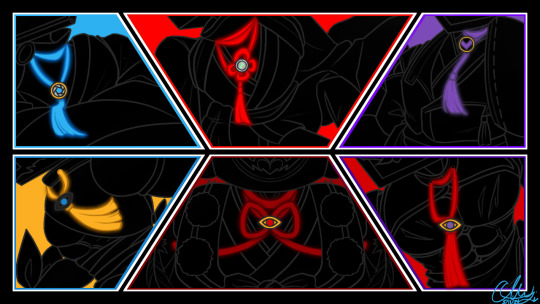
"Master...? Y-you're my Master?! Please—, let me soothe your dreams forevermore—! No wait that sounded like a marriage proposal wejusTMETI'MSOSORRY—!!!"
"Haha... Is this my luck or Fate bringing me to you? Ah—, never mind. It's really nice to meet you, Master!"
"...I never would've thought I'd meet you in my life time. Hahaha~... What a welcome surprise. I dearly for hope you continue to do so, my dear Master."
"Th-..the rope... C-could you... tie it t-...to me, Master? I'll... I'll foll'w you t-to th....the e-ends'f the earth...pr'mise..."
"Hello Master!!! It's so nice to finally meet you!! Please, tie this rope around my neck! I can't wait to show you around— I think you'd love Sanctuary!"
"You... hahaha—! It was you all along?? ......You're not leaving me Master. EVER... I won't EVER let you. Ahuhuhu~! Buckle up 'cause you're stuck with me forever, Master~!"
─────────────────────
This is an AU very much based/inspired on @twstedforyou's own original Yōkai Twisted Wonderland AU with @cosmica-galaxy's OCs as the victims subjects!
(If you want, check them out! Their art and story is super cool! Sorry in advance for this skibidi Jouice twstedforyou!)
This may or may not be updated further with moar stuff but we'll see~! Hope you enjoy!
─────────────────────
"Yōkai are a class of supernatural entities and spirits in Japanese folklore."
They can range from your classic demon or Oni, to objects gained spirit and sentience such as Kasa-Obake, a friendly and playful one eyed, one legged sentient umbrella. So now that that's outta the way...
My Yōkai AU's similarities with @twstedforyou's AU:
Yōkai have a predestined soulmate or 'Master' who they care for very much; their love for their Master can range from platonic to romantic to beyond, it's really whatever their Master wishes for their relationship to be, the Yōkai will simply follow to their whims
Yōkai can only ever have one Master in their long lifetime but the Master can have multiple Yōkai familiars
When a Yōkai meets their Master for the first time, their overwhelming love manifests as a literal physical thing, namely the rope that rests around their neck. Its typically referred by humans as the 'red string of fate'.
When it appears, the Yōkai in question ask for their Master to tie said rope around their neck. It's a symbol of claim and acceptance. Once put on, the Yōkai will be very possessive and be protective of it, never letting anyone but themselves and their Master to touch it. Prayers for idiots that decide otherwise...
When a Yōkai's Master dies, things can go in a violent or non-violent way. Both ways are usually done in the extremes with very few composed enough to grieve normally, for Yōkai at least.
In the non-violent way, the Yōkai will mourn greatly for years, perhaps centuries, sometimes taking up the role of defending whatever's left of their Master be it their possessions or remaining family.
Other times, some Yōkai can be guided into finding a way to reverse their death, if only to give them something other than wasting away in their Master's territory for centuries or following their Master to the grave themselves...
In the violent way, the Yōkai will go on a rampage, destroying things and hurting other beings, even fellow Yōkai under the same Master. Rampages can be sporadic or constant. Either way, if the Yōkai in question can't reign in themselves soon enough, a Yōkai Hunter will be sent to cull them for the greater good.
My Yōkai AU:
It's not only Yōkai that apply to this AU, other supernatural creatures from other cultures and folklore apply to this as well. Beings such as Fae, Yaoguai, Nymphs, Mermaids, Golems, Angels etc, etc...
Each culture's supernatural beings have a District in the Other Realm, the dimension for all supernatural beings. Districts are basically sub dimensions of the Other Realm that encompass their own folklore like Tír na nÓg for the Celtic other world or the Yōkai District for the Japanese other world.
These sub dimensions are accessible almost anywhere in the human realm, one merely needs to have a resident of whichever district one plans to go to. Otherwise, majority of accessible District Gateways are ones related to the region's folklore. (eg. England has most District Gateways to the Faerie Courts)
It's also worth noting the Other Wold may have time differences with the human realm, sometimes going faster and sometimes slower.
When a Yōkai manifests their rope, sometimes, the Master will reject them. It will hurt at first but they're tied by fate for a reason. The Yōkai will wait however long until the Master is ready, no matter what the Yōkai's temperance my be. What's a few more years to the centuries they've waited after all?
A Yōkai's rope will only manifest if they meet their Master properly. If a Yōkai were to simply pass by their master, the rope won't manifest which has led to many missing each other by total accident.
Not to say the Yōkai wouldn't notice anything, they would actually get a nagging feeling of something important nearby. Some dismiss it and others latch on to it, its a game of chance whether or not the Yōkai recognizes it.
The Hunter's Association is a group of Yōkai Hunters that work for the secretive liaison government that bridge and balance between the normal and supernatural society.
They're usually sent out to keep the peace and rid of 'out of control Yōkai' that pose a treat to the tentative peace. They're pretty much a neutral entity that has mostly humans and few hybrids. Somewhat similar to twstedforyou's but a little more involved in government business.
While every Yōkai has a destined soulmate, not all meet their Masters. Some unfortunately die before their meeting, it can happen on both sides, or they simply never venture out to search, opting to stay in their District than venture the human realm.
(Also somewhat important to note that the fickle time difference in the Other Realm has to do with this as well. Some Yōkai will spend all their lives or a bit too long in their Districts to ever meet their Master.)
While twstedforyou's Yōkai cannot kill each other, Yōkai can be killed by fellow familiars if one tries hard enough. It does also have to do with the will of the Master though.
In simple terms, if the Master doesn't believe or want their Yōkai to hurt their fellow familiars, they can't. Only if the Master were truly want them dead, they can be killed by fellow familiars.
For the most part, they wouldn't kill them out of respect of their master and familiar kinship but they can certainly beat them to a pulp and leave others to finish the job they can't.
─────────────────────
Check out my main blog: @researcher-serif
Here's my NSFW blog if that tickles your fancy: @grandfather-of-sin
─────────────────────
#no art thieves allowed#do not repost#without permission at least#mine art#skibidi tag#skibidi toilet mimic#skibidi mimic#yokai au
38 notes
·
View notes
Note
Random question: have you ever heard of an egregore, and do you think that’s what the nations basically are?
kind of, yes 🤔—as per wiki, for everyone else:
Egregore (also spelled egregor; from French égrégore, from Ancient Greek ἐγρήγορος, egrēgoros 'wakeful') is an esoteric concept representing a non-physical entity or thoughtform that arises from the collective thoughts and emotions of a distinct group of individuals.
nations, as i see them, are very much dreamed into being through the hopes and beliefs of humans. sort of an ironic 'and so, humanity made god/the gods in their image.' many nations definitely have a special relationship with the land itself, just as many human cultures are very much rooted in and coloured by a sense of physical space and place too—think of the significance of the Yellow River as the 'cradle' of Chinese civilisation, the Nile for Egypt, the ancient symbolic significance of Mount Fuji to Japanese culture, the broader importance of the Mediterranean to Rome as 'mare nostrum' (our sea) or how the Mexica city of Tenochtitlan was built on and associated with Lake Texcoco. but at its core, the source of their being imo, is humanity (as there are nomadic nations too, for example, who have more fluid relationships with the land, when you consider various ancient seafaring cultures too). for clarity's sake, i'm using the term 'nation' more loosely as a representation of human cultural-political communities, as i'm aware in a stricter definition, 'nations' and 'nationalism' are a strictly modern phenomenon.
i think there's an elegant irony in how nations can seem almost godlike in their (conditional) immortality, and how many were likely considered some variant of divine in many cultural traditions (the roman story is literally that romulus and his brother remus were the children of Mars, the god of war, no?)...but ultimately, they owe their existence to us regular humans whose lifespans are a fraction of theirs. it's like, as representations of human cultural-political communities, they are these larger than life concepts that encompass both the good and bad of humanity; encompassing every beautiful work of art and poem ever composed—but they've also been the ones in whose names wars were fought in since antiquity. they cannot die no matter how badly their incarnate body is injured because the souls of humans that believe in them are what bind them to the world...but by that same token, even the proudest empires of their day—like babylon, rome or carthage—have also been rendered mortal and subject to the unforgiving hand of history; all the rise and falls, and beginnings and endings.
61 notes
·
View notes
Text
So time for some more Tu'la lore, more specifically tattoo lore!
In Tu'la, tattoos are rather common and even have a cultural and religious significance to them. That is not to say that everyone has tattoos, but it is common enough for it to be normalized. Now, much like real life, there are a lot of reason to get tattoos but these are the main categories.
Cosmetic
Familial
Religious
Status
So, cosmetic tattoos simply put are just for cosmetics, much like how we will get moth man tramp stamps, they will get a wyvern on their fore arm. Common cosmetic tattoos are animals, clouds, and flowers with the art style depending on your region. (North Tu'la - Japanese styled, South Tu'la - Indian or henna like designs)


Familial Tattoos - With the majority of the population in Tu'la being Mei'fwa, it is safe to say that almost all of the human population is related to one in one way or another. A common practice for children of Mei'fwas who end up with human genes is to get their parents stripe or spot patterns tattooed on the shoulder and chest. That way they can look like their parent without having the need for ears and a tail.

Religious - The Temple of Menphia is very pro tattoos and a lot of initiations for being a priest or temple warrior requiring them. The first set of tattoos that a person receives (normally when they are six) is a large sun tattoo encompassing their back with two suns on their palms. Menphia's iconography involves a lot of the sun. As they progress in age, they get writings of protection on their imbs along with various lines to represent the flow of emotion and magic in the body. Another common tattoo is to get a very small symbol of menphia imbetween a persons pecs/breasts.






(Last picture for placement and vibe of Menphia symbol tat)
Status - Tattoos can also be a symbol of status as certain tattoos have certain meanings with some ink only being available to those in the royal family. The current king of Tu'la actually doesn't have his family's tattoo for he is actually a coward but he does have servants paint it on him every morning. Very much a tiger with false stripes

Status tattoos were not reserved for the upper class either and tattoos weren't all fine and dandy for one particular crowd and that is gladiators. When gladiators are indoctrinated the first thing that they are given is a tattoo of a snake eating itself (ouroboros) on their left ribs. It is both one of the most painful places to get a tattoo but one close to their heart without being on their chest. These tattoos are enchanted and used as a tool of submission. When the current benefactor of the gladiator activates the sigil, it causes a burning and sick feeling to course through the gladiators body. They needed to touched up every five years or every time the gladiator gets a new benefactor or else the magic fades.
Not only are gladiators tattooed with the snake tattoo, a lot of them are forced to under go any form of tattoo that their benefactor wants. Like a permanent form of dress up. Liochant got snake tattoos on his arm because his benefactor wanted to capitalize on his nickname "pit viper".


24 notes
·
View notes
Text
Inkwarren Devlog #2: Welcome to Cairnadal!
The trees around your village are tall, and they are old. As you linger on the edge of the cobblestone path, you consider the forest beyond. You have heard of what lurks in the Deeper Wood- old beings, older than Inkwarren, and pale things that hate the things that lurk in the light. You look back to the flickering golden light of your village's tharian, admiring briefly the iron-wrought and rune-laden shape of the lamppost. The Abbey says tharians are shields against the deep and the dark, but doubt lingers at the back of your mind. What if they're wrong about the Wood?
Hello again, y'all! Sorry for a little while with no updates, it's been a crazy and long week in Matt World. I'm here for another update for Inkwarren, my in-development dark fantasy TTRPG of swashbuckling tactics and storybook intrigue, to talk about the game's setting: the ancient and magical woodland of Cairnadal.
Cairnadal
Cairnadal is a massive, realm-spanning woodland that encompasses all of the Known World. Ancient and beautiful, Cairnadal carries with it an odd and bewitching beauty. Woodlanders, the intelligent animal inhabitants of Cairnadal, most often live amongst the roots of the tall trees that make up the woodland around them. Sunlight comes in narrow beams that gracefully dance across the forest floor, and the soil is rich and fertile after centuries of greenery and other things that live amongst the woodland.
Woodlanders
Cairnadal is primarily inhabited by woodlanders, a society of intelligent animals that have built stone cities and little villages that dot much of Cairnadal's breadth. Woodlanders are small mammals, birds, amphibians, and reptiles, that form into societies and communities amongst each other where they create art, research knowledge, wage war, and consolidate power. There's good and bad in woodlanders, just as there is in us. The current society of the woodlanders is the vast and expansive kingdom of Inkwarren (oh look, the game's title!), which spans across five of Cairnadal's great six regions.

Beasts
Arthropods, fish, mollusks, and other animals are called beasts, and take the place that animals do in our world that we live in as humans. Woodlanders fish for food, ride stag beetles from city to city, send messages via trained dragonflies, and keep ladybugs and rollie-pollies as household pets. Wild beasts, like large hunting spiders or common crabs to be found on beaches, are approached with some measure of caution or respect for Cairnadal's many lifeforms.
Other Beings
Other beings inhabit the vast woodland of Cairnadal. Dead things return to life as lyches, animated by the weird magicks of the Deeper Wood, and massive, gentle stone giants with no name wander the wood, a remnants of the unknown civilization of That Which Came Before. Other animals, massive things known as the Old Masters of the Wood, can be found deep within the Deeper Wood. They have different languages, different gods, and different conceptions of the world than woodlanders do, and rumors are that they abound in a strange and ancient magick at their command.

Inkwarren
Inkwarren is the massive kingdom that spans most of Cairnadal, established over nine-hundred moons ago after a massive, woodland-spanning conflict known as the War of Red Flowers. Inkwarren is ruled by House Greyfell, a house of cats currently led by Alys II, who has served as King Crowned of Inkwarren for thirty-nine moons.
Inkwarren is made up of five major wards, each led by a powerful noble house called a High House. These wards are the Aerie, the Heartlands, the Yawning Roads, the Waterways, and Winterreach. Culture and language varies from region to region, and the High Houses often clash with each other while skirting the edges of violence.
Daily Life in Inkwarren
Every settlement in Inkwarren is protected by a magical lamppost called a tharian. Tharians glow with a light akin to faint sunlight, and ward away magicks and other beings that come from the Deeper Wood. The Abbey, the principle religious entity that dominates most of Inkwarren, professes that tharians are necessary for the peace and safety of Warrenish settlements, but there are those who would whisper and say otherwise. No one knows exactly where tharians came from, and the art of creating them has been lost to history.
Each settlement in Inkwarren is often governed by a noble house, represented by a reeve (which is somewhere between a mayor and a sheriff). It is common to have small chapels for the Abbey in many settlements, where the tharian lies at the center. Most woodlanders carry common professions such as smiths, scaleworkers, weavers, farmers, or messengers between settlements.
The Five Great Regions
Inkwarren is made up of five massive regions of Cairnadal, each governed by a High House, with their own languages, religions, and cultures.
The Aerie is a massive section of woodland where the towns and settlements are built from wooden platforms around the trunks of trees, with bridges or simple ropes connecting each platform-town. The tharians of the Aerie grow their wrought-iron poles around the trunks of trees, twisting into the platforms that settlements are built around. The Aerie is mostly inhabited by flying woodlanders, although climbing coats of woodlanders such as squirrels or possums have been known to make their home amongst the trees. The Aerie is ruled by House Ddur-Adain, a vulture house.
The Heartlands are the largest region of Cairnadal, built between the massive roots and tall trees that make up the woodland proper. The Heartlands is the home of Inkwarren's capital city, Gwydir, and is a center of commerce for the rest of Warrenish society. The Heartlands are the seat of House Greyfell, the cat house that rules all of Inkwarren.
The Waterways are river-laden hills and marshes where the trees of Cairnadal become fewer and farther between (but still cover most of the land). The Waterways are dotted with settlements populated with woodlanders that make their homes near water: ducks, otters, frogs, and snakes that hunt, fish, and forage for their daily living. The Waterways are ruled by House Wynne, an snake house.
Winterreach is a vast region of pine-covered mountains and snowy bluffs. Winterreach is scarcely populated, and its few settlements are made up of woodlanders comfortable with the cold and ice of that realm. Winterreach is ruled by House Castledown, a snowy owl house.
The Yawning Roads are a massive network of caverns that spans under most of Inkwarren, where cities are carved out of rock and stone. Here, strange 'roots' of the tharians above light caverns and protect from things that lurk under the dirt. The Yawning Roads are inhabited mostly by burrowing woodlanders such as moles, voles, or rabbits, as well as bats, salamanders, and burrowing owls that are commonly found underground. The Yawning Roads are ruled by House Sare, a salamander house.
The Deeper Wood
The Deeper Wood is the section of untamed woodland of Cairnadal not dotted by Warrenish settlements or protected by tharians. Strange things are said to lurk within these woods, magical things that existed before Inkwarren existed as a kingdom. Both the Crown and the Abbey forbid travel into the Deeper Wood, but braver wanderers have been known to wander off the cobblestone path, and your mind lingers on what might be out there...
That's All For Now!
Thanks for reading! I'll be back soon with another devlog to talk about Battle and how Inkwarren approaches its philosophy to combat and violence. Thanks for reading!
27 notes
·
View notes
Text
Tiny drawing for the Andreagami anniversary ♥️

— Okay to Reblog!! 🌟
Happy Third Anniversary, Byakuya <3
He’s been with me throughout my best times and my worst times in my life. This year has been so heavy on me, but the one thing that stayed consistent is Byakuya and how much I loved him.
I know he’s fictional, but the impact he’s had on me is very real. He really sparked my artistic passion again and made me the artist and creative I am today — and that’s a skill I’ll hold for life. Not to mention the assignments I shoehorned him in and aced, so obviously he’s had a tangible academic impact on me too. His willpower he showed inspired me too throughout the worst times of my life.
But I’ve been healing. The last month has seen me get so much better, and I have my lovely friends to thank for supporting me through my struggles and creative endeavours to still make me feel like I was worth something. Albeit, sometimes the only thought that kept me from my self-destructive tendencies was him comforting me.
I know this is only small this year, but I’m working on a lot of art right now along with improving myself and working — it’s a rather hefty endeavour but I’m so happy!
Even when everything is said and done, and I finally move on from Byakuya, I want you all to know that I did love him, and the love was very similar to what you would feel for a real human being. You may think that’s sad, but I think my capacity to love someone that wholly and to be so inspired by one person is beautiful. I know real relationships have more tangible, tumultuous times and boundaries that a fictional one does not encompass, but writing Andreagami and exploring myself through them and the research I was doing has taught me a lot and how to resolve some of my own personal issues.
I love Byakuya so much, and no matter what, he’s made a positive impact on me, my hobbies, talents, and who I am today.
#oc x canon#self ship art#self ship#self insert#fictional other#romantic f/o#self shipping#selfshipping#selfship art#selfship#f/o community#self insert art#andreagami#ship tag: book lovers ♡#art with Freya | ♠️
56 notes
·
View notes
Text


In “The Basics of Death Magick” I briefly mentioned what death energy is like.
“Death energy is about stillness, endings, and about the deconstructing and reconstructing processes. It’s about using what’s passed to fertilize what’s new and grow something that has purpose in the next step of your life. It’s about the acceptance of inevitability and what we can’t change to bring about what we can.”
That statement is somewhat vague in comparison to the full expanse of the truth. So in this blog I intend to break it down and fully flesh out exactly what I’m talking about here. It’s a truth that isn’t really grasped fully by many death craft users for some reason. A truth that all must learn to fully grasp the encompassing mystery of death.

A Moment of Death
The act of death itself is a very swift action. The time leading up to it may be arduous and long but the moment the soul is separated from the body is almost instantaneous. It’s the exact instant that the ultimate change happens. And it’s that small instantaneous moment from which we’ve created a whole practice.
In that second, everything is different. Our mortal minds are completely stripped away and the real truth, the incomprehensible knowing that our previously living bodies weren’t made to comprehend, suddenly becomes realized in its entirety. This is the ultimate transformation, and the strongest form of the liminal.
Death & the Liminal
It may seem strange to think of death itself being liminal, especially since the moments between life and death are in of themselves liminal. Well the truth is death is all about change just as it is about the ending of something. You see, once Death happens, decay sets in and the process slowly melts away the old tissues, creating nutrients for the earth. This is the process of the liminal. The point of change from one form into the another. A reconstruction of energy. So while death is undoubtedly the end that is merely the tip of the iceberg as it would seem. The process of change is one of the biggest parts of death magick and yet it’s rarely talked about and understood by many who claim to practice it. Yet it is so quintessential to the art.
Stillness & Movement
As stated in the quote above, death is about stillness. However, just as it is about both endings and reconstruction so to is it about stillness and movement alike. The stillness we are most familiar with comes from the physical realm, the corpse. While the underlying movement in the equation stems from the spirit that was released. It’s a movement often unseen with mortal eyes but exists nonetheless. So I suppose the most accurate description of this energy would be “the physical stillness and hidden movements.”
Both forms of energy are intertwining and never exist without the other. That’s the reason many death users and spirit users alike often have a physical representation in their work and why many necromancers go to graveyards. The unity of the stillness and movement aspects work most beneficially when they are in tandem. And while one can call on them separately, it’s in their nature to connect. So working with both leads to a more prosperous craft.
Now, while I’m aware we all can’t have the convenience of working with an aspect of the corpse, like its bones for instance, especially when it comes to human bodies. Nor are we all able to get to a cemetery, it’s still important to represent the physical aspect of death. Trinkets and belongings from ancestors and relatives passed on work well, as do skulls carved in stone or crystal. You see, honoring the unity of both halves of death energy is the key to success.
In Conclusion
Death energy is a more complex energy than many may realize. It has layers and depth that few dive into completely and understand, preferring to work with what’s presented on the surface. The best way to experience Death magick is to understand these complexities and immerse oneself within its mysteries.

#paganism#witchcraft#pagans of tumblr#chaos magician#chaos magick#eldritch magic#witches of tumblr#death witchcraft#death witch#death#death magic#death magick
43 notes
·
View notes